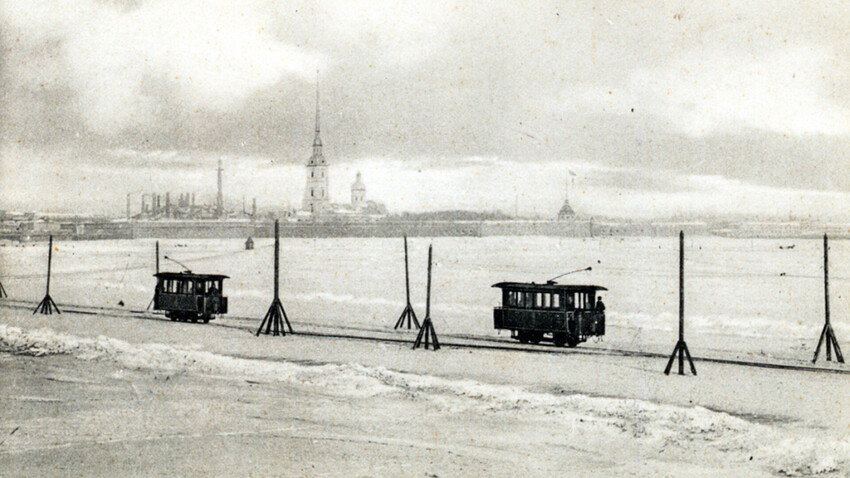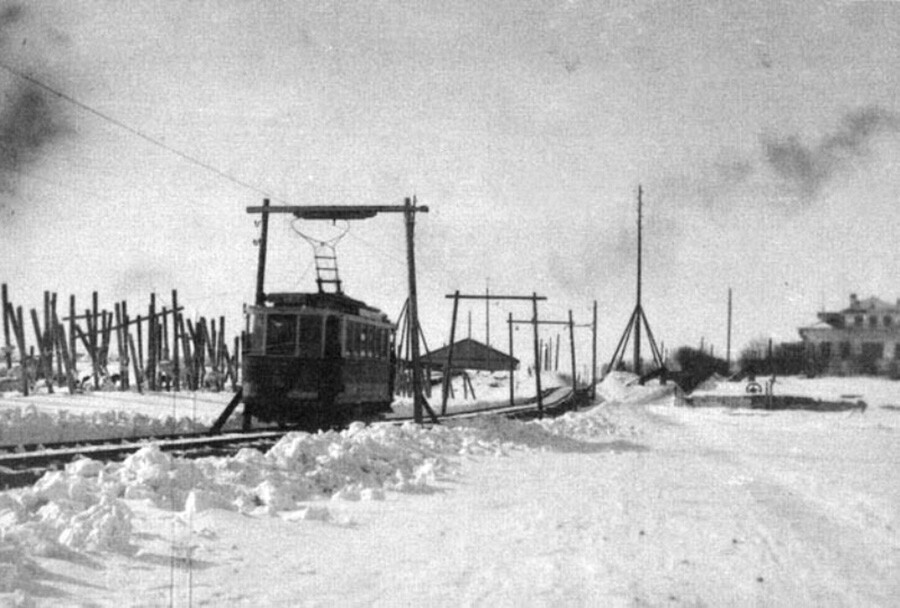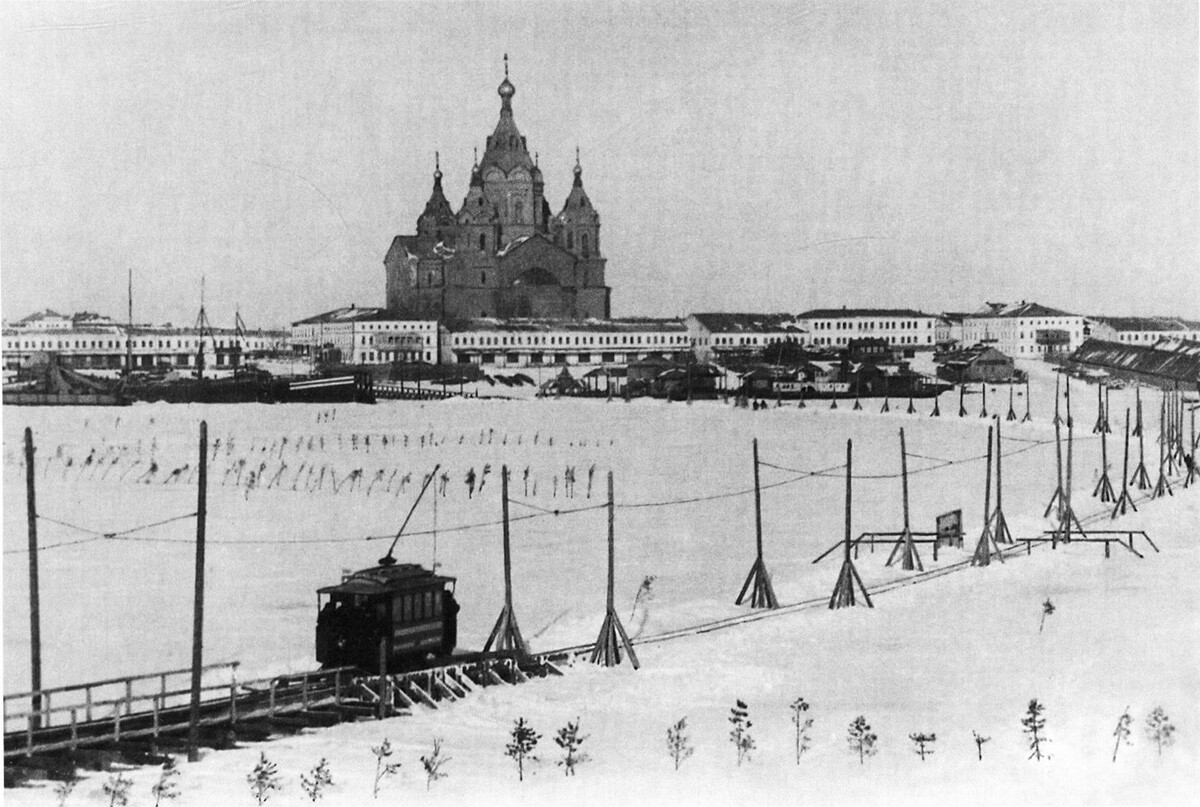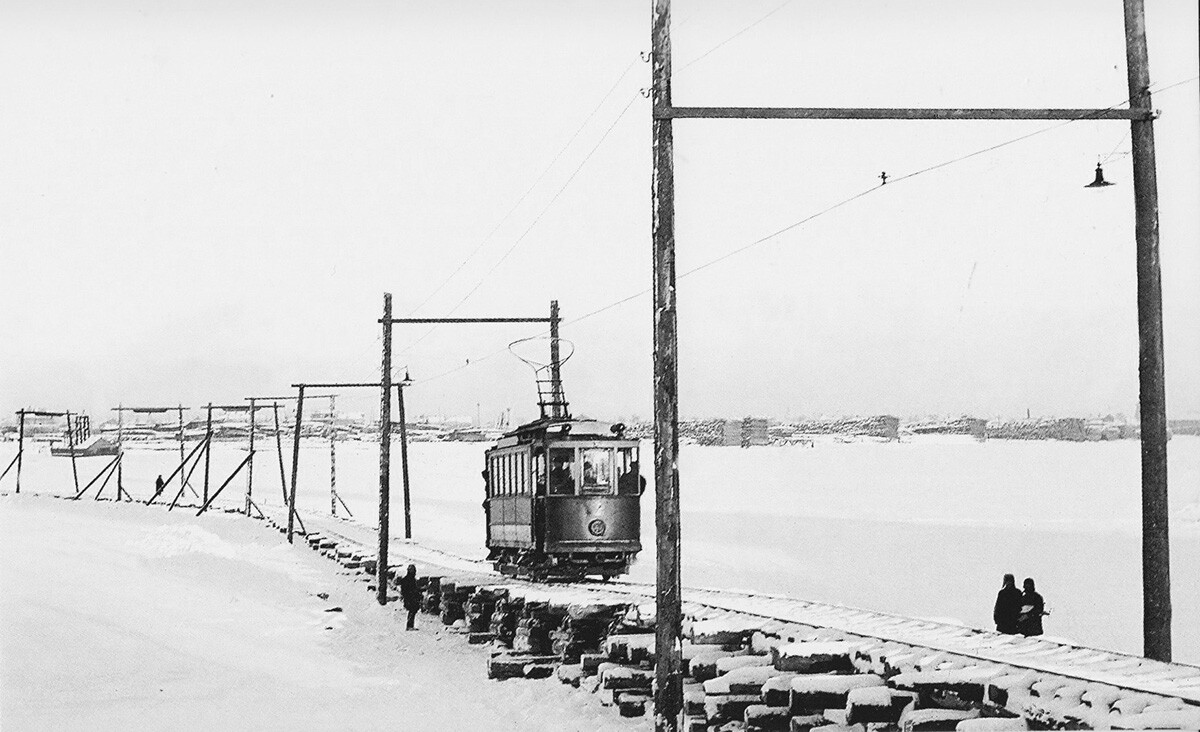
The reason is, at the end of the 19th century, tram transportation on the streets of the then Russian capital was monopolized by a private enterprise – the Horse Railway Company. It signed a concession agreement with the City Duma, according to which the authorities couldn’t simply launch an electric train in the city center until 1902 (although it had already been successfully tested back in 1880).

However, there was nothing in the document that mentioned rivers. Using this, in 1895, the Finnish Light Shipping Company and M. M. Podobedov and Co Association for the Use of Electricity launched the city’s first electric trams… on the Neva River.

Naturally, they were only used during winter. Rails and crossties were laid down on ice at an angle; a contact wire was set over them. The power line posts were then frozen into ice. And this form of transport could accelerate up to 20 km/h.
The trams provided service from January to March on four different lines. Over a season, they transported up to 900,000 passengers in total. During warm seasons, ferries would run along the same routes.

In 1899, a similar type of transport was launched in Nizhny Novgorod – on the ice of the Oka River; in 1917, it was launched in Arkhangelsk – on the frozen Northern Dvina River.
These ice trams functioned in St. Petersburg from the Winter of 1895 until the Winter of 1910. Over this period, not one crashed through the ice.
The first land electric tram line was launched in the city only in 1907 – five years after the network of horse railways had passed into the ownership of the city.

Dear readers,
Our website and social media accounts are under threat of being restricted or banned, due to the current circumstances. So, to keep up with our latest content, simply do the following:
If using any of Russia Beyond's content, partly or in full, always provide an active hyperlink to the original material.
Subscribe
to our newsletter!
Get the week's best stories straight to your inbox